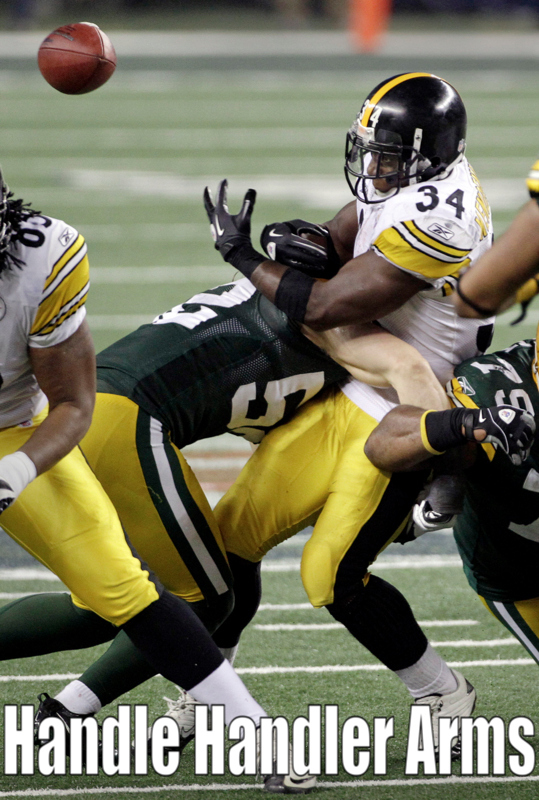Seattle Seahawks quarterback Russell Wilson is a great quarterback. There. I said it. And I mean it. I also mean it when I say, “He’s no Aaron Rodgers.”
Rodgers, of the soon-to-be-visiting (but not soon enough) Green Bay Packers, has generated some offseason headlines over the past few days, as media outlets have filled the Web and the occasional dead tree publication with “top players” lists. Most notably, the NFL Network’s top 100 players list only listed Rodgers as the 11th best player in the league. A snub? Depends on who you ask. Rodgers is wisely staying silent about it, but he is widely known to be motivated by snubs. A real chip-on-the-shoulder guy.
As for me, I wouldn’t be surprised at all to see Rodgers walk into CenturyLink on September 4th with the new jersey number of “11,” rather than his customary “12.” An extra motivated Aaron Rodgers is not what the Seahawks need as they undertake the defense of their first NFL title.
Mister Rodgers’ neighborhood
The news gets even worse for Seahawks fans. Rodgers won’t be coming alone. In truth, he’ll bring with him a better receiving corps and a deeper, more potent running attack than Seattle will boast. Don’t believe me? Blasphemy, you say? Consider this.
In any ranking, be it the NFL Network top 100, or CBS’ top 100 (courtesy of Pat Kirwan), or any of a dozen others, Rodgers is ranked higher than Wilson. NFL.com’s Around the League writer Chris Wesseling even places Rodgers “alone at the top” among all NFL quarterbacks, so the NFL has some dissension in their own ranks.
Rodgers is the consensus winner over Wilson. Advantage: Green Bay.
Running for daylight
As for running backs, Marshawn Lynch had another Beastly season in 2013: 1257 rushing yards for an average of 4.2 yards per carry, three 100-yard games and 12 touchdowns in 16 games. His backups, Robert Turbin and Christine Michael, averaged 3.4 yards on 77 carries and 4.4 yards on 18 carries, respectively. Neither scored all season.
Green Bay’s top running back, Eddie Lacy, put on a similar Beast-like season, rookie style. Lacy managed 1178 yards with an average of 4.1 yards per carry, four 100-yard games and 11 touchdowns in 15 games. Lacy missed one game early in the season with a concussion. Still, his total is about equal to Lynch’s, and projects to about the same or better over 16 games.
The Packers’ backup running back, James Starks, delivered 89 carries for 493 yards (5.5 yards per carry), one 100-yard game and three touchdowns. The Packers are also expecting the return of their top running back in 2012, DuJuan Harris, who missed all of 2013 with a knee injury.
Factor in the youth, low cost and potential of the NFL’s offensive rookie of the year (Lacy), and the Packers’ superior backing cast and the running back advantage is clearly with Green Bay.
Catch me if you can
Without going into too much detail, Jordy Nelson, the Packers’ top receiver, would be the hands-down No. 1 receiver on the Seattle Seahawks and more than half of the rest of the league, for that matter. There has been no better quarterback / wide receiver combination in the NFL than Rodgers-Nelson for the past three seasons. Check out this comparison in the Washington Post, if you have your doubts. It’s not even close, upon examination.
What about Percy Harvin, you say? Well, the Packers have Percy Harvin — a younger, more reliable and less expensive Percy Harvin. His name is Randall Cobb, a player so similar to Harvin, Cobb rarely gets compared to NFL receivers other than Percy Harvin. In 2013, however — a down year for Cobb — Cobb became even more like Harvin by missing a major chunk of the season to injury. Still, he played in seven games for the Packers, including playoffs. Which means he played four more games than Harvin did in 2013/2014.
Advantage: Green Bay.
Lowering the Boom
But offensive stars don’t line up against other offensive stars. They play against defenses. Advantage: Seattle — big time.
The Packers of 2013 stumbled into the postseason with an 8-7-1 record and quickly exited at the hands of the San Francisco 49ers. It would be a mistake to assume, based on their 2013 record, the Packers have peaked, or that their defense is as weak as it showed in the waning weeks of the 2013 season.
Here’s why: The Packers lost nearly every single one of their top playmakers to injury during the course of the season: Aaron Rodgers (seven games), Randall Cobb (10 games), tackle Bryan Bulaga (16 games), top defensive player Clay Matthews (five games, plus the playoffs), top interceptor Casey Hayward (13 games, plus the playoffs) — that’s a lotta wasted cheddar. The only bona fide stars on the Packers to not lose multiple games to injury were Nelson and guard Josh Sitton.
The point? Unless the Packers lose all these same guys to injury in the next 55 days or so, the Packers that will come to Seattle on September 4th will be nothing like the .500 Packers that finished 2013. With a few key new defensive starters on deck (Ha Sean Clinton-Dix, Julius Peppers), the Packers will be reloaded, barring another injury debacle.
With the offensive advantages the Packers have, Seattle’s first game of the 2014 season will likely come down to the Seahawks’ defense in order to successfully defend their Super Bowl victory. In other words, not much has changed on the Seattle side of the ball.
I cannot wait.
Add The Sports Daily to your Google News Feed!
